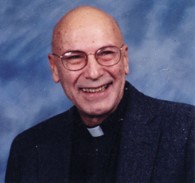Monday, February 24
The Lakota expression “hanblechia” means
“she/he cries out for a vision.”
“Hanblechia,” the most sacred Lakota ritual, begins with a sweat bath, singing and begging prayers as the bodies of the people in the sweat lodge are welcomed into supersaturated steam from igneous rocks, which won’t explode when they have been fire heated to deep red. The people in the dark lodge break a sweat before the singer pours the first dipper of water on the glowing rocks; they are piled in the center hole inches away from those who have entered the sweat lodge. The lodge is covered tightly so that the inside is completely dark, except for the glowing rocks. The lodge has the shape of a half circle, the singer does not pour the first water until the door flap is closed and the people all sit cross-legged and naked. In that posture, the roof of the lodge is only a few inches from the top of your head and you have bent forward, close to the red hot stones, a few inches from your face. When the sweat is finished the sweat, the holy man (“Wicasa Wakan”) leads the seeker to a sacred place to pray alone, for as many as 4 days of complete fasting, begging for a vision to live from.
Jim Janda lived as a mystic pilgrim for most of his 74 years. He died August 7, 2010 in Salt Lake City, a priest of that diocese since 1996. Jim also lived for a quarter century as a Jesuit which is when we met. Jim was “well known for his gentle and generous heart. . . . During his life he wrote and published a series of short religious stories for children, school plays and books of poetry.” So reads his obituary in the Salt Lake Tribune. The obit is accurate, as was the stated cause of his death, emphysema; I think he smoked too much. I can’t remember ever visiting with Jim without feeling bathed in wisdom and tenderness, and in his awareness of how deep grief runs in human beings, right there along with whimsy.
The Tribune’s evocation of “stories for children, school plays and books of poetry . . .” does not even hint at the flint-hard prose and fine-tuned ironies that throb and flow through his poems. Today’s post comes from the 1970s when Jim lived on the Lakota Rosebud Reservation in South Dakota. Like many of his poems, “The Town in March” is homey and close to the grass without flinching from pain.
Jim Janda reminds me of Joy Harjo. I am glad I thought to pull his book off my poetry shelf.
Best to read the poem out loud, with pauses.
Have a blest weekend,
john sj
Today’s Post
To cry for a
vision
is a sacred
task
after hearing
a holyman
after taking
a sweat bath
with sage and
sweet grass
one must climb a
mountain alone—
here a song
may be heard
here a vision
may be given
here a dance
may be learned—
one must then
leave
the mountain
to sing the
song
to live the
vision
to begin the
dance
J Janda

